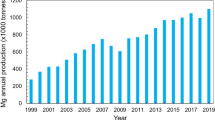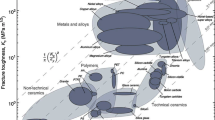Abstract
It is shown that, upon the rolling of a (110)[001] Fe-3% Si single crystal to different degrees of deformation, special misorientations of types Σ3, Σ9, Σ11, Σ19a, Σ27a, Σ29b, and Σ33a can be formed between the elements of the mesostructure (deformation twins, deformation bands, and shear bands). In the process of deformation, these misorientations are retained; the Σ3 misorientation is partially transformed into close misorientations of the Σ17b and Σ43c types. The nuclei of primary recrystallization with orientations close to (110)[001] are formed at twins, in transition bands, and in shear bands retain regions of special boundaries with the deformed matrix, which correspond to special misorientations arising during deformation. The experimental data obtained make it possible to draw a direct analogy between the processes of phase and structural transformations. In the case of phase transformations, a characteristic feature is the presence of orientational relationships between the crystal lattices of the initial and arising phases, which manifests in the parallelism of the close-packed planes and directions. In the case of structural transformations, the role of orientation relationships is played by special misorientations.
Similar content being viewed by others
References
C. G. Dunn, “Cold-rolled and primary recrystallization textures in cold-rolled single crystals of silicon iron,” Acta Metall. 2, 173–183 (1954).
H. Hu, “The formation of (110)[001] recrystallization texture in cold-rolled and annealed (110)[001] crystal of silicon iron,” Acta Metall. 8, 124–126 (1960).
Yu. S. Avramov and G. Naumann, “Formation of primary recrystallization texture in (110) single crystal of transformation steel rolled in different directions,” Fiz. Met. Metalloved. 24, 1042–1049 (1967).
B. G. Lifshits, V. Yu. Novikov, and L. V. Roshchina, “Study of texture formation at primary recrystallization in deformed single crystals of silicon iron with {110}〈001〉. 1. Structure change at annealing,” Fiz. Met. Metalloved. 34, 801–810 (1972).
B. K. Sokolov, A. K. Sbitnev, V. V. Gubernatorov, I. V. Gervasyeva, and L. R. Vladimirov, “On the influence of the annealing heating rate on the recrystallization texture of a deformed single crystal (110)[001] of 3% silicon iron,” Textur. Microstruct. 26–27, 427–443 (1995).
B. K. Sokolov, V. V. Gubernatorov, I. V. Gervasyeva, A. K. Sbitnev, and L. R. Vladimirov, “The deformation and shear bands in the Fe-3% Si alloy,” Textur. Microstruct. 32, 21–39 (1999).
D. Dorner, S. Zaefferer, and D. Raabe, “Retention of the Goss orientation between microbands during cold rolling of an Fe-3% Si single crystal,” Acta Mater. 55, 2519–2530 (2007).
K. Ushioda and W. B. Hutchinson, “Role of shear bands in annealing texture formation in 3% Si-Fe single crystals,” ISIJ Int. 29, 862–867 (1989).
I. V. Gervas’eva, B. K. Sokolov, R. A. Schwarzer, V. V. Gubernatorov, and Ya. V. Podkin, “Effect of the initial grain size on the structural inhomogeneity and texture formation upon cold rolling and annealing of the Fe-3% Si alloy,” Phys. Met. Metallogr. 96,Suppl. 1, S43–S52 (2003).
M. L. Lobanov, G. M. Rusakov, A. A. Redikul’tsev, and I. V. Kagan, “Deformation-twinning-related features of primary recrystallization of (110)[001] single crystals of the Fe-3% Si-0.5% Cu alloy,” Phys. Met. Metallogr. 111, 587–591 (2011).
M. L. Lobanov, G. M. Rusakov, A. A. Redikul’tsev, and L. V. Lobanova, “Formation of special misorientations related to transition bands in structure of deformed and annealed single crystal (110)[001] of Fe-3% Si alloy,” Phys. Met. Metallogr. 114, 27–32 (2013).
G. M. Rusakov, M. L. Lobanov, A. A. Redikultsev, and I. V. Kagan, “Model of {110}〈001〉 texture formation in shear bands during cold rolling of Fe-3% Si alloy,” Metal. Mater. Trans. A 40, 1023–1025 (2009).
G. M. Rusakov, M. L. Lobanov, A. A. Redikul’tsev, and I. V. Kagan, “Specific features of cold deformation of a (110)[001] single crystal of an Fe-3% Si-0.5% Cu alloy related to twinning,” Phys. Met. Metallogr. 111 530–545 (2011).
V. S. Litvinov and G. M. Rusakov, “Interaction of dislocations with the boundaries of {112}〈111〉 twins in bcc crystals,” Phys. Met. Metallogr. 88, 384–389 (1999).
G. M. Rusakov, M. L. Lobanov, A. A. Redikultsev, and I. V. Kagan, “Retention of the twinning Σ3 misorientation in the process of lattice transformation during cold rolling of a Fe-3% Si single crystal,” Metal. Mater. Trans. A 42, 1435–1438 (2011).
A. Albou, M. Galceran, K. Renard, S. Godet, and P. J. Jacques, “Nanoscale characterization of the evolution of the twin-matrix orientation in Fe-Mn-C twinning-induced plasticity steel by means of transmission electron microscopy orientation mapping,” Scr. Mater. 68, 400–403 (2013).
M. L. Lobanov, A. A. Redikul’tsev, G. M. Rusakov, I. V. Kagan, and O. V. Pervushina, “Effect of the grain orientation in the material used for the preparation of an ultrathin electrical steel on its texture and magnetic properties,” Phys. Met. Metallogr. 111, 479–486 (2011).
H.-K. Park, J.-H. Kang, C.-S. Park, C.-H. Han, and N.-M. Hwang, “Pancake-shaped growth of abnormally-growing Goss grains in Fe-3% Si steel approached by solid-state wetting,” Mater. Sci. Eng., A 528, 3228–3231 (2011).
Author information
Authors and Affiliations
Corresponding author
Additional information
Original Russian Text © G.M. Rusakov, M.L. Lobanov, A.A. Redikul’tsev, A.S. Belyaevskikh, 2014, published in Fizika Metallov i Metallovedenie, 2014, Vol. 115, No. 8, pp. 827–838.
Rights and permissions
About this article
Cite this article
Rusakov, G.M., Lobanov, M.L., Redikul’tsev, A.A. et al. Special misorientations and textural heredity in the commercial alloy Fe-3% Si. Phys. Metals Metallogr. 115, 775–785 (2014). https://doi.org/10.1134/S0031918X14080134
Received:
Accepted:
Published:
Issue Date:
DOI: https://doi.org/10.1134/S0031918X14080134




